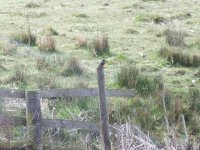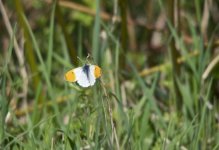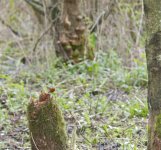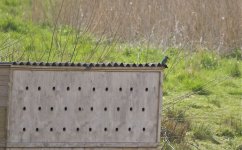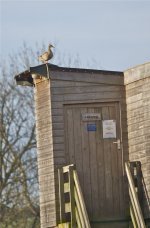upstarts1979
Well-known member
John, one thing that was apparent after the 'secret garden ' was created, was how quickly the cuckoo flower (ladies smock) appeared after we had removed the overgrown canopy. The orange tips then followed in good numbersI am glad to see you were enjoying the butterflies today, but I wonder how many people know on which food plants these common butterflies are dependant and where, if at all, they are to be found on the reserves at Upton Warren.
The rarest butterfly we have on the reserve which emerges later in the summer is the White-letter Hairstreak; nationally it is Notable Scarce b, which means it occurs in only 31 to 100 ten kilometre squares in the country. The eggs of this butterfly, grey flying saucer like discs, can currently be seen fixed below a flower bud on twigs on the sunny side of the canopy of its favoured Wych Elm along the Salwarp. John
Bumblebees: in front of the water rail hide today feeding on ground ivy were: common carder, early and buff tailed
B
Last edited:





